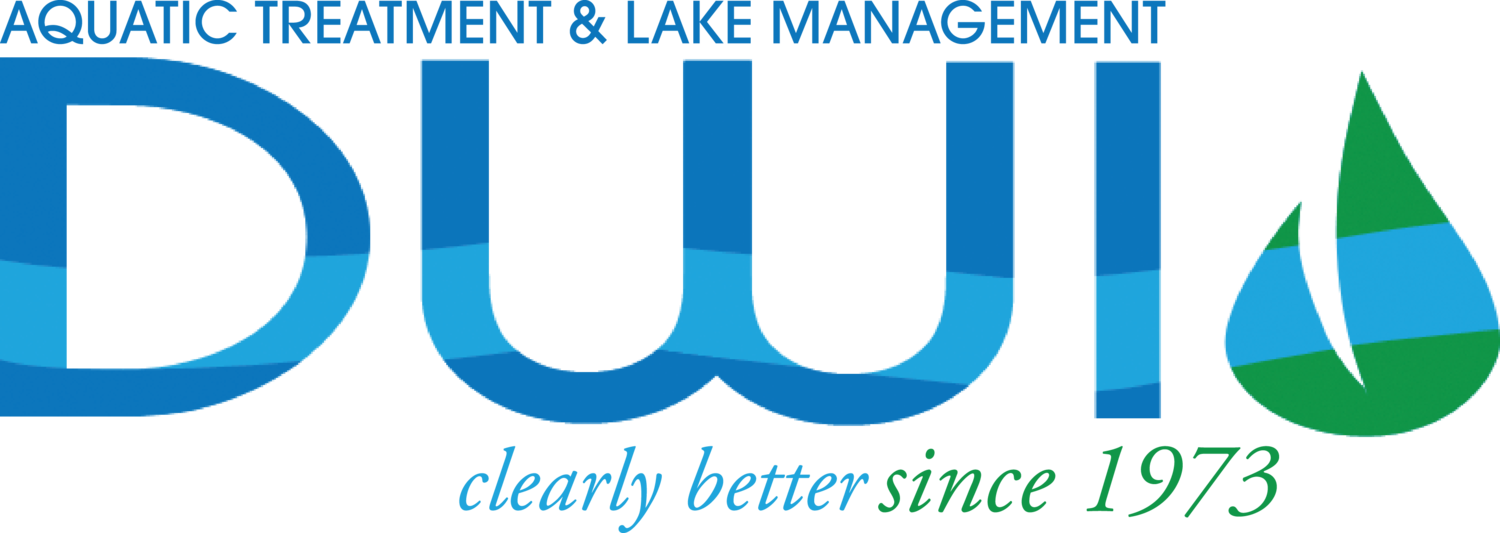By Patrick Simmsgeiger, Founder of DWI
The individuality of streams and lakes makes maintenance far more complicated than simple cause and effect. Out of ten of your golf course’s water features, two might need close to nothing, three might be very tough to manage, and five might need simple preventive measures. It’s the tough ones that motivate golf course superintendents to seek a specialist. Because neglect is the worst enemy of lakes, streams and ponds, action e.g. maintenance and treatment are required.
Problems
Water is innocent, but its stowaways are not. Organisms can build up on the bottom and sides of a water feature. When they die, they become nutrients (food) for other aquatic organisms. They create a self-perpetuating problem unless you step in and break the chain. Phosphates, nitrogen, organic material, oils, and minute plant life are the villains. We can protect water’s reputation and eco-system by being more aware of the contaminants it can carry.
To touch on some of the problems about which you are probably already aware, we’ll give you a general idea of the trouble caused by – over watering fertilized turf that surround your ponds, streams, and lakes; the positioning of trees near bodies of water; and the troubles your lakes and streams experience when grass clippings are dumped into the water feature.
We could go on forever listing all the deterimental nutrients that are added to a water feature due to runoff. It goes without saying that runoff from fertilized turf is going to wreak havoc with your waterscapes. The fertilizer is loaded with nutrients that serve as a growth stimulator for the aquatic weeds and algae. In essence, you are nurturing that which is most offensive to you and the club members and/ or residents.
The debris from tree leaves is another major source of nutrients in ponds, lakes, and streams, making it a major source of trouble. Grass clippings (the tips) contain the highest level of nutrients (nitrogen and phosphorus) of the entire grass stem. Taking these clippings and placing them into a body of water makes “today’s grass clippings tomorrow’s algae bloom. Once again, you have the issue of food for better and faster aquatic wed and algae growth.
Then there is the issue of reclaimed water, which is an entirely different (and extensive subject) to broach. Golf Course Superintendents already know, and are frustrated by, the problems inherent to the use of reclaimed water due to the nutrient load and the high salt content. The color is off, the algae is harder to control and the odor is difficult to manage.
When your water feature gets hit with an unsightly pea soup green appearance or starts to emit an odor, the answer won’t be a single fix-all. It will be a package of solutions working together to resolve the problem. Bottom line, an aquatic problem can’t be fixed by making one change and moving on.
Course Superintendents respect the value of water features so it follows he or she appreciates the concept of natural balance. There are all kinds of tools, some work as promised, but no one is a solution by itself. The best approach is to start with the idea of restoring a balance by providing adequate circulation, managing nutrient levels, ensuring adequate aeration and adjusting suspended solids and organic content with equipment and registered chemicals. The trick is not to create a new problem by overloading one side of the equation.
In lieu of natural counterbalances, we fight back by adding products to slow down the progression of biological contamination. We manipulate pH (acidity and alkalinity) to make sure the additives effectively block contaminants. We run filters and periodically remove visible contaminants from the bottom. We block sunlight to organisms that use sunlight and chlorophyll to grow.
Filtration and circulation are often the weak points in a contaminated aquatic system. Keep filters and filter media clean. Circulate water in a volume and frequency that permits sufficient filtration and oxygenation. Filters only work when the pump is on, therefore, in a perfect world the pumps should run 24/7 but in this time of energy conservation, the pump should be activated at least twelve hours daily so the filter can do its job and the water does not become stagnant. As we all well know stagnant water, aside from being unsightly, smelly, and a great place for algae to grow also becomes a breeding ground for mosquitoes. And we now have the West Nile Virus concerns because of the mosquitoes that breed in motionlesss water.
Design has a significant influence on weed problems. Depth is important and the shape of a feature greatly affects circulation and filtration. Debris from trees, fertilized turf and ornamentals are big factors in the introduction and increased growth of aquatic weeds and algae. A good aerator, properly placed, will keep water circulating and recharge water with oxygen. However, realize that aerators and fountains along will not eliminate contamination.
Problem - Foam (caused by soaps and dead organic material)
Solution - Defoamers. Very effective and application rates vary with the amount of foam. Just remember, chlorine can reduce their effectiveness.
Problem - Clarity (caused by minute particles floating in the water, some forms of algae clay mud or dirt, etc.)
Solution - Verify that there is good aeration and circulation then purchase a flocculent/ clarifier. Flocculent/ clarifiers are like magnets. They latch onto floating or suspended contaminants (suspended silt, algae, dead organic matter and dust), “group” them all together, then make them so heavy they fall to the bottom. There are also some good bacteria you can purchase that will enhance the water quality and clarity and can also help by digesting some of the bottom sludge.
Problem - Algae. Algae can’t grow to the point of being invasive and excessive if nutrients aren’t present, even when conditions are perfect. They need food like all of us. But, lets face it, we are in an imperfect world thus nutrients are generally present. With this in mind we must not ignore the problem but aggressively treat and control the algae. If the problem of algae is not dealth with, like all problems, it won’t just go away. There are products that “kill” everything in sight. . . rapidly. There are other products, which manage the algae and “kill” the offensive plant but are gentler to the environment and the fish that dwell within. These products usually contain copper sulfate in one form or another with the variations on content and chelation being the factors that makes a particular product “safer” than another. Once the algae is at the level of control desired the use of a biological is recommended to keep the sludge at a lower level.
Solution - Ensure there is sufficient aeration and filtration. After the issues of aeration and filtration are addressed and you still have an algae problem you will then need to apply a product made to control and/ or eradicate algae. There are some enzymes that work well in “boosting” the algae control products. Make sure there are no compatibility difficulties.
Problem - Color. You have a tournament coming up and want your lakes to look especially good for the players and residents but also for the media. Dyes block some of the sun from hitting the algae and aquatic plants (which need sunlight to grow). Without sunlight plants can’t produce chlorophyll, which means carbohydrates, the food need by plants to grow, are not produced. Used properly, dyes are not a threat to fish or humans and can reduce algae and aquatic plants.
Solution - Obviously all the above contribute to a better appearance. Once control is gained over the aforementioned issues and the color needs to be more aesthetically pleasing it is time to buy a dye. There are dyes that are safe for water, waterfowl, fish and other living organisms.
In summary, please bear in mind that much more of the earth is covered in water than land, yet we often behave like land is the only thing that counts. We already know there is an earth filled with water that matters a great deal to us, we just need to give it the respect it is due. Don’t assume that one thing can resolve all problems, after all, this is nature with which we are dealing. You can have it all, if you delegate lake and pond management professional does on a daily basis. They aren’t cleaning pools, they are attempting to preserve and maintain the delicate balance between the natural aquatic organisms and the desired aesthetics of the highly visible bodies of water within your golf courses. This is an aquatic professional’s specialty and the reason his/ her business exists. Problems with your feature? Call the professionals!



